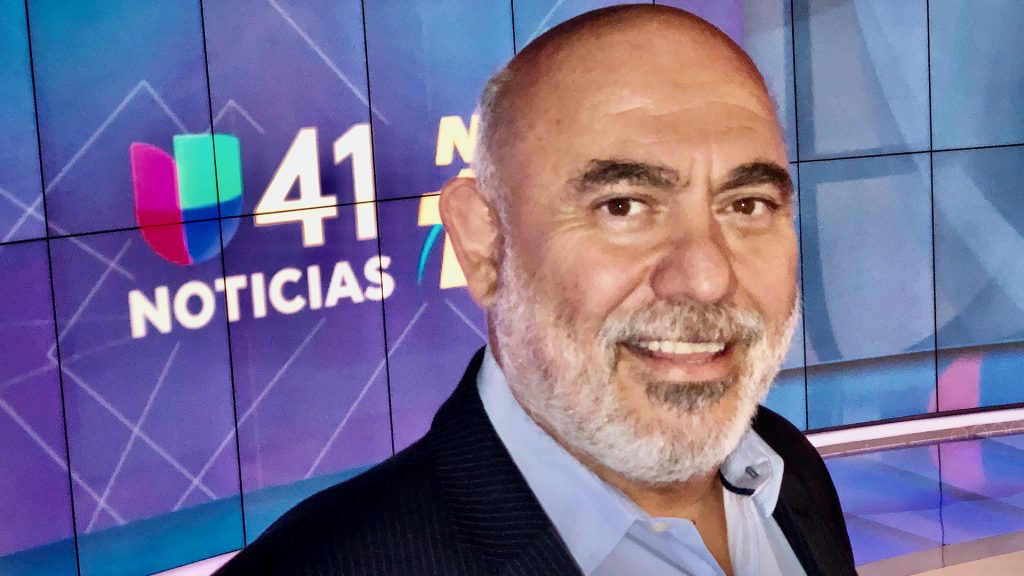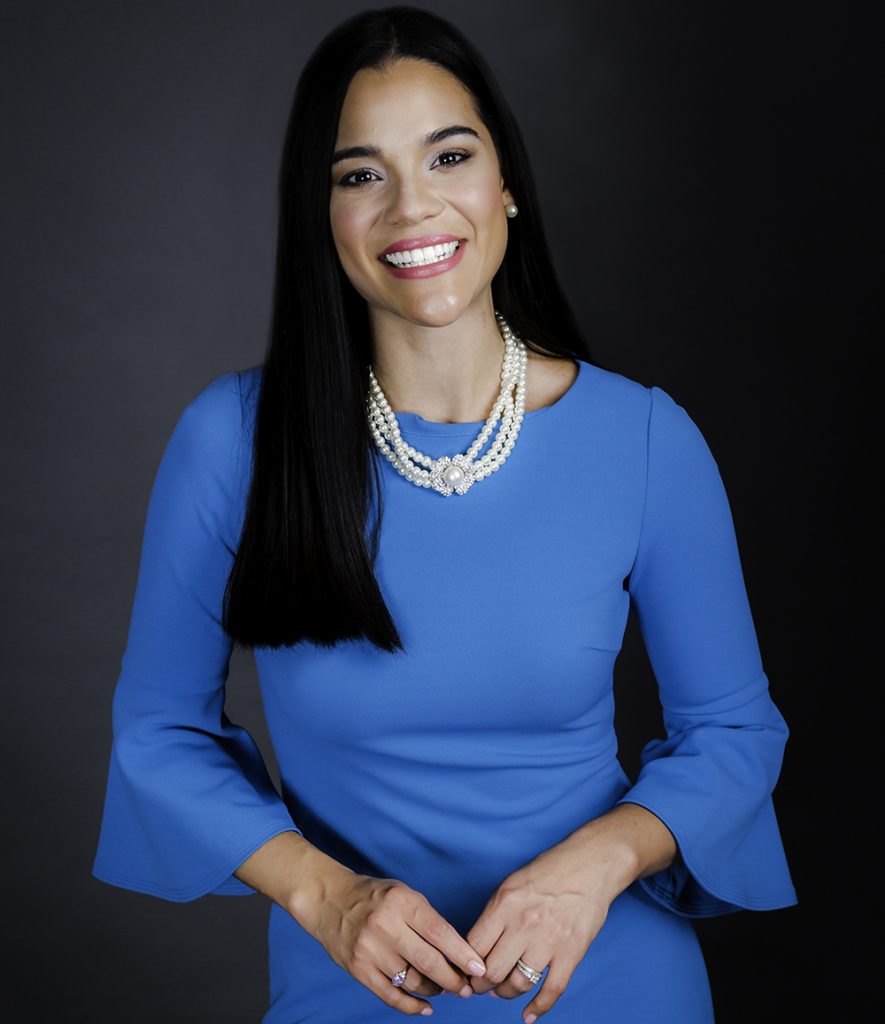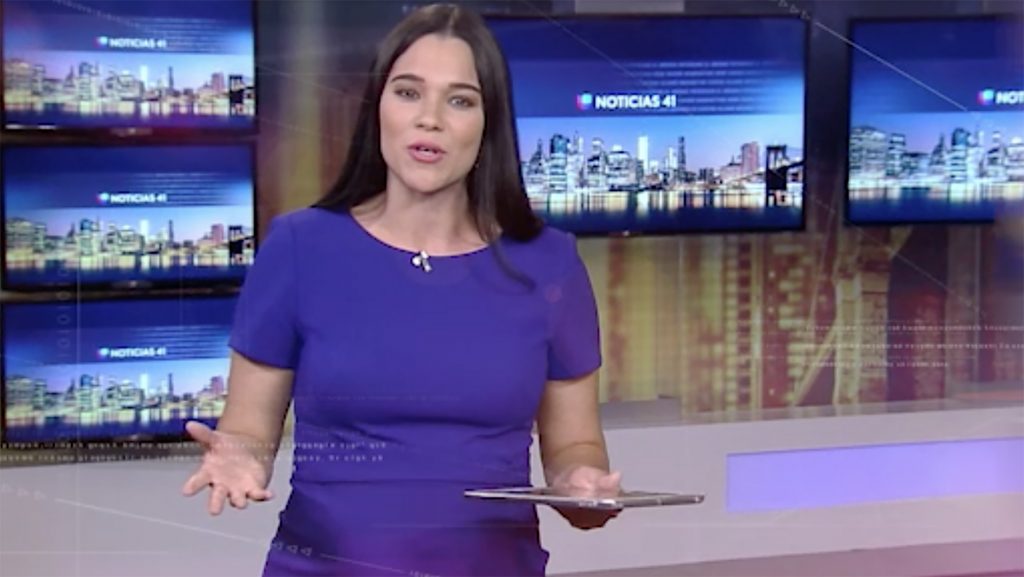
Esteban Creste has never been afraid to take chances. Maybe that’s why he started his own newspaper, called Trébol (Clover) in Spain — at age 12. And maybe it’s because he had a fledgling career as a child actor and lived in four different countries before coming to the United States at age 20. Creste had to work in restaurants for two years before landing his first journalism job, as a print reporter on the very gritty streets of The Bronx in the late 1980s.
Thirty years and many news (and some sports) jobs later, Creste is News Director at Univision 41, the company’s New York station. And he and his team have decided to re-imagine one of local television’s most familiar and enduring formats — the late news. While it’s way too soon to know whether the experiment will work, there are lessons already for any station interested in challenging the status quo.
The name hasn’t changed, but Solo a Las Once (Only at Eleven), which re-launched this September, is determined to break away from the almost-universal late-news formula wherever it can. On most stations, “we see the same stories every single night,” says Creste. “The locations and the names change, but the stories are the same.” On his new program, you still get the major headlines (along with sports and weather), but much of the material that other outfits call “breaking news” is relegated to voice-overs or ignored altogether in favor of longer reports and newsmaker interviews — typically two to four topics per evening, sometimes as few as one.
There are no standard 1:30 news packages: instead, taped segments run at whatever length the story requires, often followed by interviews. In the program’s first two weeks, stories on New York’s infamous Rikers Island prison and on Newark New Jersey’s troubled water supply ran between six and seven minutes, assignment manager and head of planning Alba Eduardo told me. On the day I visited the newsroom, a police crackdown on the notorious Los Trinitarios gang was a conventional news package on the traditionally formatted 6 p.m. broadcast, but one of the station’s night-side reporters was given six hours to do something special for the 11. “We’re going to take a deep dive into the subjects and let them be as extensive as they need to be,” Creste says.

Like TEGNA’S Next With Kyle Clark, the 6 p.m. newscast on KUSA-TV in Denver that flouts the normal rules for what makes local news tick, Solo a Las Once relies heavily on audience input. The producers post a question on Twitter and Facebook at 10 p.m., then display answers on screen or have anchor Yisel Tejeda incorporate them directly into touch-screen segments or interviews.
The program strives to surprise the viewer, says executive producer Arturo Lopez. “It’s about the news of the day, or it could be something that’s completely unexpected.” Creste sets a high bar for the team. “Every night, we do a different thing. We open the newscast from a different location. We touch on different subjects. So the idea is to be completely innovative every single night.” He says Solo a Las Once has “no formula — there is complete freedom” to tailor each program to the day’s stories. “How are you going to start tonight?” he likes to ask. For those who believe part of a daily newscast’s appeal lies in its reassuring familiarity, it’s a bold move.

No one knows that better than Tejeda, who co-anchors the much more heavily scripted 6 p.m. newscast but steps out from behind the desk to anchor the late news alone. “I think that’s one of the biggest challenges we have,” she says. “People are used to going home and turning on their TV and just seeing voice-over after voice-over, 1:30 package after 1:30 package. And now we’re giving them something completely different.”
Competitive pressure certainly played a role in Creste’s decision to revamp the late news. Telemundo, once an also-ran to Univision nationally and in major markets, has come on strong under Comcast’s ownership, including in New York. A year ago, Univision 41 commissioned Magid research that revealed a desire for more in-depth reporting on issues of special import to Latinx communities, including (surprisingly to Creste) politics, “and that they saw us as their protectors. So the idea is to do something that really provides information to our viewers that they can use to have a positive impact in their lives,” says Creste. “Something that is important.”
The research prompted Creste to create a set of principles that can be summarized as compelling enterprise reporting that’s local, relevant, and overtly in the viewer’s corner. Every newsroom employee had to learn the principles and is supposed to apply them to every single story, every single day. “We have gone through this process where we now have a very focused mission,” says Assistant News Director Geraldine Cols Azocar, “and a very focused goal, which helps a lot in our story selection, and in every decision that we make. And our goal and our mission fit very well with this new format at 11 p.m.”
In the promo that producer Luis Antonio Valera made to announce the re-tooled late news, Tejeda says “We want to make a promise and a pact with you at home. We promise to bring you the relevant issues that impact your lives, and you promise to be the support and the reason for this effort.”

So far, the station has kept up its end of that bargain. It’s too early to speak for the viewers. The ratings in the first two weeks have been mixed, but they were shaky before the change as well. And TEGNA’s Denver experiment with Kyle Clark showed that you might have to lose some of your existing viewers in order to attract the audience you are now trying to serve. Creste’s colleague Lisbeth Diaz thinks the new program may draw some people who have drifted away from TV news altogether. “We were not actually addressing issues that were a societal concern for our community,” she says. “We were reporting on something that continues happening, and just showing a VO or a package and letting it go. Now, we’re doing totally the opposite. I think there’s a huge opportunity for actually attracting another kind of viewer that is expecting something different, like the viewer that does not want to hear about the shooting that Telemundo is covering.”
Creste agrees. “People are moving away from from TV. So unless you give them something really interesting, they’re going to leave completely.” He knows the radical reinvention is a risk, maybe a big one.

Fifteen years ago, Creste was working for Telemundo in New York when he got an offer to move to Chicago to be news director of the company’s station there. He took the job but worried that he didn’t know the city well enough; he had only been there once before. So Creste would get lost on purpose: he would hop on the “L,” ride to a station he didn’t know, and then walk back to his apartment through unfamiliar streets. Sometimes you have to leave your neighborhood to find your way home.